The RES in the Countries of the Commonwealth of Independent States: Potential and Production from 2015 to 2019
Abstract
1. Introduction
2. Context and Research Goals
2.1. Geography of the Commonwealth of Independent States (CIS)
- Eastern European Countries: Belarus, Moldova, Ukraine.
- South Caucasus countries: Armenia, Azerbaijan, Georgia.
- Central Asian countries: Kazakhstan, Kyrgyzstan, Tajikistan, Turkmenistan, Uzbekistan.
- Due to its dominant role in the region, Russia is considered a separate category.
2.2. Determinants of Political and Economic Connections in the Former Union of Soviet Socialist Republics (USSR)
2.3. Research Goals and Hypotheses
- To present geographical and political factors influencing the potential and development of RES.
- To present the energy production and RES potential of the CIS countries and to compare it against the EU countries.
- To investigate the dynamics of changes in the potential and production of RES in recent years.
3. Results and Discussion
3.1. The Current State of the Energy Potential and Renewable Energy Production in the CIS
3.2. Dynamics of Changes in the Renewable Energy Potential and Production in the CIS Countries
4. Conclusions
Author Contributions
Funding
Institutional Review Board Statement
Informed Consent Statement
Data Availability Statement
Conflicts of Interest
References
- Keles, S.; Bilgen, S. Renewable energy sources in Turkey for climate change mitigation and energy sustainability. Renew. Sustain. Energy Rev. 2012, 16, 5199–5206. [Google Scholar] [CrossRef]
- Sen, S.; Ganguly, S. Opportunities, barriers and issues with renewable energy development—A discussion. Renew. Sustain. Energy Rev. 2017, 69, 1170–1181. [Google Scholar] [CrossRef]
- Martinot, E.; Dienst, C.; Weiliang, L.; Qimin, C. Renewable Energy Futures: Targets, Scenarios, and Pathways. Annu. Rev. Environ. Resour. 2007, 32, 205–239. [Google Scholar] [CrossRef]
- Li, L.; Lin, J.; Wu, N.; Xie, S.; Meng, C.; Zheng, Y.; Wang, X.; Zhao, Y. Review and outlook on the international renewable energy development. Energy Built Environ. 2020. [Google Scholar] [CrossRef]
- Gródek-Szostak, Z.; Suder, M.; Kusa, R.; Sikora, J.; Niemiec, M. Effectiveness of Instruments Supporting Inter-Organizational Cooperation in the RES Market in Europe. Case Study of Enterprise Europe Network. Energies 2020, 13, 6443. [Google Scholar] [CrossRef]
- Gródek-Szostak, Z.; Suder, M.; Kusa, R.; Szeląg-Sikora, A.; Duda, J.; Niemiec, M. Renewable Energy Promotion Instruments Used by Innovation Brokers in a Technology Transfer Network. Case Study of the Enterprise Europe Network. Energies 2020, 13, 5752. [Google Scholar] [CrossRef]
- Ponce, P.; Oliveira, C.; Álvarez, V.; Río-Rama, M.D.L.C.D. The Liberalization of the Internal Energy Market in the European Union: Evidence of Its Influence on Reducing Environmental Pollution. Energies 2020, 13, 6116. [Google Scholar] [CrossRef]
- Sun, H.; Edziah, B.K.; Song, X.; Kporsu, A.K.; Taghizadeh-Hesary, F. Estimating Persistent and Transient Energy Efficiency in Belt and Road Countries: A Stochastic Frontier Analysis. Energies 2020, 13, 3837. [Google Scholar] [CrossRef]
- He, Y.; Xu, Y.; Pang, Y.; Tian, H.; Wu, R. A regulatory policy to promote renewable energy consumption in China: Review and future evolutionary path. Renew. Energy 2016, 89, 695–705. [Google Scholar] [CrossRef]
- Kankam, S.; Boon, E.K. Energy delivery and utilization for rural development: Lessons from Northern Ghana. Energy Sustain. Dev. 2009, 13, 212–218. [Google Scholar] [CrossRef]
- Nfah, E.M.; Ngundam, J.M.; Tchinda, R. Modelling of solar/diesel/battery hybrid power systems for far-north Cameroon. Renew. Energy 2007, 32, 832–844. [Google Scholar] [CrossRef]
- Dizdaroglu, D. The Role of Indicator-Based Sustainability Assessment in Policy and the Decision-Making Process: A Review and Outlook. Sustainability 2017, 9, 1018. [Google Scholar] [CrossRef]
- Yasar, N. Stationarity properties of renewable energy consumption in the commonwealth of independent states. Int. J. Energy Econ. Policy 2020, 10, 155–159. [Google Scholar] [CrossRef]
- Chalvatzis, K.J.; Ioannidis, A. Energy supply security in the EU: Benchmarking diversity and dependence of primary energy. Appl. Energy 2017, 207, 465–476. [Google Scholar] [CrossRef]
- Cohen, G.; Joutz, F.; Loungani, P. Measuring energy security: Trends in the diversification of oil and natural gas supplies. Energy Policy 2011, 39, 4860–4869. [Google Scholar] [CrossRef]
- Vivoda, V. LNG import diversification in Asia. Energy Strat. Rev. 2014, 2, 289–297. [Google Scholar] [CrossRef]
- Sutrisno, A.; Nomaler, Ö.; Alkemade, F. Has the global expansion of energy markets truly improved energy security? Energy Policy 2021, 148, 111931. [Google Scholar] [CrossRef]
- Bilgin, M. Geopolitics of European natural gas demand: Supplies from Russia, Caspian and the Middle East. Energy Policy 2009, 37, 4482–4492. [Google Scholar] [CrossRef]
- Ji, Q.; Zhang, H.-Y.; Fan, Y. Identification of global oil trade patterns: An empirical research based on complex network theory. Energy Convers. Manag. 2014, 85, 856–865. [Google Scholar] [CrossRef]
- Zhang, H.-Y.; Ji, Q.; Fan, Y. Competition, transmission and pattern evolution: A network analysis of global oil trade. Energy Policy 2014, 73, 312–322. [Google Scholar] [CrossRef]
- Chien, T.; Hu, J.-L. Renewable energy and macroeconomic efficiency of OECD and non-OECD economies. Energy Policy 2007, 35, 3606–3615. [Google Scholar] [CrossRef]
- Apergis, N.; Payne, J.E. Renewable energy consumption and growth in Eurasia. Energy Econ. 2010, 32, 1392–1397. [Google Scholar] [CrossRef]
- Fang, Y. Economic welfare impacts from renewable energy consumption: The China experience. Renew. Sustain. Energy Rev. 2011, 15, 5120–5128. [Google Scholar] [CrossRef]
- Tiwari, A.K. A structural VAR analysis of renewable energy consumption, real GDP and CO2 emissions: Evidence from India. Econ. Bull. 2011, 31, 1793–1806. [Google Scholar]
- Bilgili, F.; Ozturk, I. Biomass energy and economic growth nexus in G7 countries: Evidence from dynamic panel data. Renew. Sustain. Energy Rev. 2015, 49, 132–138. [Google Scholar] [CrossRef]
- Ozturk, I.; Bilgili, F. Economic growth and biomass consumption nexus: Dynamic panel analysis for Sub-Sahara African countries. Appl. Energy 2015, 137, 110–116. [Google Scholar] [CrossRef]
- Bhattacharya, M.; Paramati, S.R.; Ozturk, I.; Bhattacharya, S. The effect of renewable energy consumption on economic growth: Evidence from top 38 countries. Appl. Energy 2016, 162, 733–741. [Google Scholar] [CrossRef]
- Hassine, M.B.; Harrathi, N. The causal links between economic growth, renewable energy, financial development and for-eign trade in gulf cooperation council countries. Int. J. Energy Econ. Policy 2017, 7, 76–85. [Google Scholar]
- Ozcan, B.; Ozturk, I. Renewable energy consumption-economic growth nexus in emerging countries: A bootstrap panel causality test. Renew. Sustain. Energy Rev. 2019, 104, 30–37. [Google Scholar] [CrossRef]
- Sari, R.; Ewing, B.T.; Soytas, U. The relationship between disaggregate energy consumption and industrial production in the United States: An ARDL approach. Energy Econ. 2008, 30, 2302–2313. [Google Scholar] [CrossRef]
- Sadorsky, P. Renewable energy consumption and income in emerging economies. Energy Policy 2009, 37, 4021–4028. [Google Scholar] [CrossRef]
- Cho, S.; Heo, E.; Kim, J. Causal relationship between renewable energy consumption and economic growth: Comparison between developed and less-developed countries. Geosyst. Eng. 2015, 18, 284–291. [Google Scholar] [CrossRef]
- Trifonov, I.; Trukhan, D.; Koshlich, Y.; Prasolov, V.; Ślusarczyk, B. Influence of the Share of Renewable Energy Sources on the Level of Energy Security in EECCA Countries. Energies 2021, 14, 903. [Google Scholar] [CrossRef]
- Dolgiev, M.M. Energy Potential as the Most Important Factor of Ensuring Regional Economic Security. Available online: http://vestnik.adygnet.ru/files/2012.4/2214/dolgiev2012_4.pdf (accessed on 23 February 2021).
- Lobova, S.V.; Ragulina, J.V.; Bogoviz, A.V.; Alekseev, A.N. Energy security performance: A dataset on the member countries of the Commonwealth of Independent States, 2000–2014. Data Brief. 2019, 26, 104450. [Google Scholar] [CrossRef] [PubMed]
- Apergis, N.; Payne, J.E. Energy consumption and economic growth: Evidence from the Commonwealth of Independent States. Energy Econ. 2009, 31, 641–647. [Google Scholar] [CrossRef]
- Çetintaş, H. Energy consumption and economic growth: The case of transition economies. Energy Sources Part B Econ. Plan. Policy 2016, 11, 267–273. [Google Scholar] [CrossRef]
- Ehkonomicheskij Sud Sodruzhestva Nezavisimykh Gosudarstv, Reshenie o Tolkovanii po Zaprosu o Primenenii Polozhej Soglashenij i Drugikh Aktov Sodruzhestva s Dnia 31 Marta 1994 Goda No 02/94. Available online: http://www.sudsng.org/download_files/rh/1994/Rh_02_94_310394.pdf (accessed on 2 January 2021).
- Kotulewicz, K. Procesy integracyjne i relacje społeczno-polityczne na terytorium WNP. In Społeczne, Gospodarcze i Polityczne Relacje we Współczesnych Stosunkach Międzynarodowych; Bednarczyk, B., Lasoń, M., Eds.; Krakowska Szkoła Wyższa im. Andrzeja Frycza Modrzewskiego: Kraków, Poland, 2007; p. 35. [Google Scholar]
- Ehksperty SNG Obsudjat v Sredu Proekt Soglashenija ob Associirovannom Chlenstve Turkmnii v Sodruzhestve. Available online: https://forum.md/ru/656279 (accessed on 10 January 2021).
- Reshenie Glavy Gosarstv-Uchastnikov Sodruzhestva Nvisimykh Gosudarstv ot 22 Oktjabrja 1993 Goda—3 Dekabrja 1993 Goda “O Vstuplenii Respubliki Gruzja v Sodruzhestvo Nezavisimykh Gosudarstv”. Available online: http://base.spinform.ru/show_doc.fwx?rgn=3938 (accessed on 1 January 2021).
- Vstuplenie i Vykhod iz SNG; Uchastie i Chlenstvo v SNG. Dose. Available online: https://tass.ru/info/1061058 (accessed on 1 January 2021).
- O Ratifikacii Ustava Sodruzhestva Nezavisiykh Gosudarstv. Available online: http://adilet.zan.kz/rus/docs/B930005200 (accessed on 1 January 2021).
- Pjatidnevnaja Vojna (8–12 Avgusta 2008 Goda). Available online: https://www.kavkaz-uzel.eu/articles/210899 (accessed on 1 January 2021).
- Gruzija Oficialno Vyshla iz Sostava SNG. Available online: https://www.bbc.com/russian/international/2009/08/090817_georgia_leaves_cis (accessed on 1 January 2021).
- Ustav Sodruzhestva Nezavisimykh Gosudarstv (g. Minsk, 22 Janvarja 1993 Goda). Available online: https://cis.minsk.by/page/180 (accessed on 1 January 2021).
- SNG Oficialn Iskljuchilo Gruzju iz Svoikh Rjadov. Available online: https://korrespondent.net/world/609809-sng-oficialno-isklyuchilo-gruziyu-iz-svoih-ryadov (accessed on 1 January 2021).
- Gruzija: Mozhno Perezhitbez SNG. Available online: https://www.rosbalt.ru/world/2009/08/17/664239.html (accessed on 1 January 2021).
- Ukraina Reshila Vyjti iz SNG. Available online: https://lenta.ru/news/2014/05/27/ukraine/ (accessed on 1 January 2021).
- Kazakhstan Vstupajet v Poru Ispytanija Zrelost. Available online: http://tengemonitor.kazgazeta.kz/news/16018 (accessed on 1 January 2021).
- RIA Novosti Ukraina, V Radu Podan Zakonoproekt o Vykhode Ukrainy iz Organov SNG. Available online: https://rian.com.ua/politics/20161110/1018587604.html (accessed on 1 January 2021).
- Status Ukrainy v SNG. Dose. Available online: https://tass.ru/info/5215654 (accessed on 1 January 2021).
- Ukraina Zakryla Predstavitelstvo Pri Ustavnykh Organakh SNG. Available online: https://iz.ru/782812/2018-08-28/ukraina-zakryla-predstavitelstvo-pri-ustavnykh-organakh-sng (accessed on 1 January 2021).
- Odinnadcat Stulev: Ukrainu Priglasjat na Sammit SNG. Available online: https://iz.ru/897444/dmitrii-laru/odinnadtcat-stulev-ukrainu-priglasiat-na-sammit-sng (accessed on 1 January 2021).
- MFV Vyvel Ukrainu iz Gruppy SNG—Markarova. Available online: https://www.ukrinform.ru/rubric-economy/2799941-mvf-vyvel-ukrainu-iz-gruppy-sng-markarova.html (accessed on 1 January 2021).
- The State Statistical Committee of the Republic of Azerbaijan. Available online: https://www.stat.gov.az/ (accessed on 21 February 2021).
- Agency for Strategic Planning and Reforms of the Republic of Kazakhstan Bureau of National Statistics. Available online: https://stat.gov.kz/ (accessed on 4 February 2021).
- Invest in Uzbekistan, Economy. Available online: http://invest-in-uzbekistan.org/en/ekonomika/ (accessed on 4 February 2021).
- International Energy Agency for EU4Energy, Uzbekistan. Country Overview. Available online: https://www.eu4energy.iea.org/countries/uzbekistan (accessed on 4 February 2021).
- Bank Światowy. Available online: https://databank.worldbank.org/source/world-development-indicators# (accessed on 15 January 2021).
- Statistical Committee of the Republic of Armenia. Available online: https://www.armstat.am/file/article/trud_2020_4.2.pdf (accessed on 15 January 2021).
- National Statistical Committee the Republic of Belarus. Available online: https://www.belstat.gov.by/en/ (accessed on 4 February 2021).
- National Bureau Statistics of the Republic of Moldova. Available online: https://statistica.gov.md/index.php?l=en (accessed on 4 February 2021).
- State Statistic Service of Ukraine. Available online: http://www.ukrstat.gov.ua/ (accessed on 4 February 2021).
- National Statistics Office of Georgia. Available online: https://www.geostat.ge/en (accessed on 4 February 2021).
- Asoev, A.R. Toplivno-Energeticheskij Kompleks Respubliki Tadzhikistana, Agensvo po Statistike pri Prizidente Respubliki Tadzhikistan. Available online: https://unstats.un.org/unsd/energy/meetings/cis2011/ac.240-p2_fuel.ppt (accessed on 3 January 2021).
- Przewodnik po Rynku—Republika Kirgiska. Available online: https://www.parp.gov.pl/storage/publications/pdf/2008_kirgistan.pdf (accessed on 4 February 2021).
- Istorija Rossijsko-Armjanslikh Otnoshenij. Available online: https://tass.ru/info/5538778 (accessed on 15 June 2019).
- Gruzija. Available online: http://www.gazpromexport.ru/partners/georgia/ (accessed on 15 June 2019).
- Issledovanie Ehkonomiki Pridnestrovja, Centr Strategicheskikh Issledovanij i Reform, Kishinev-Tiraspol, Nojabr 2003, pp. 9–10. Available online: http://www.cisr-md.org/pdf/0311%20transn-research%20RUS.pdf (accessed on 3 January 2021).
- Godovoj Otchet 2003; Gazprom: Moscow, Russia, 2003; p. 70.
- Eberhardt, A. Gra Pozorów. Stosunki Rosyjsko-Białoruskie 1991–2008; PISM: Warszawa, Poland, 2008; pp. 143–149. [Google Scholar]
- Kotulewicz, K. Geostrategiczny wybór Rosji u Zarania Trzeciego Tysiąclecia. Tom II. Unia Europejska Jako Strategiczny Partner Federacji Rosyjskiej na Początku XXI Wieku. Cześć II; Aspekt Gospodarczy; Wydawnictwo Uniwersytetu Jagiellońskiego: Kraków, Poland, 2015; pp. 142–155. [Google Scholar]
- Generacija Ehletroehnergii. Available online: https://www.rosatom.ru/production/generation/ (accessed on 22 February 2021).
- Abbasov, S. Plany Azerbajdzhana po Razitiju Atomnoj Ehnergetiki Vyzyvajut Ozabochennost. Available online: https://russian.eurasianet.org/node/60602 (accessed on 22 February 2021).
- Rossija Nachala Pokupat Gaz za Rubezhom. Available online: https://lenta.ru/news/2019/04/15/turk_rus/ (accessed on 15 June 2019).
- Dzhumaev, I. Vneshnjaja Torgovla Turkmenistana: Tendencii, Problemy i Perspektivy; Universitet Centralnoj Azii, Institut Gosudarstvennogo Upravlenija i Politiki: Bishkek, Kyrgyz Republic, 2012; pp. 8–11. [Google Scholar]
- Gródek-Szostak, Z.; Luc, M.; Szeląg-Sikora, A.; Sikora, J.; Niemiec, M.; Ochoa Siguencia, L.; Velinov, E. Promotion of RES in a Technology Transfer Network. Case Study of the Enterprise Europe Network. Energies 2020, 13, 3445. [Google Scholar] [CrossRef]
- Velinov, E.; Petrenko, Y.; Vechkinzova, E.; Denisov, I.; Ochoa Siguencia, L.; Gródek-Szostak, Z. “Leaky Bucket” of Kazakhstan’s Power Grid: Losses and Inefficient Distribution of Electric Power. Energies 2020, 13, 2947. [Google Scholar] [CrossRef]
- Gródek-Szostak, O.; Siguencia, L.; Kajrunajtys, D. Impact of business environment institutions on effective entrepreneurial education. In Edulearn19: 11th International Conference on Education and New Learning Technologies; Torres EDULEARN Proceedings; Chova, L.G., Martinez, A.L., Eds.; IATED: Palma, Spain, 2019; pp. 10625–10629. [Google Scholar]
- Niemiec, M.; Paluch, Ł.; Gródek-Szostak, Z.; Szeląg-Sikora, A.; Sikora, J.; Mudryk, K. Evaluation of the environmental and economic aspects of the use of common reed from eutrophic lakes for energy purposes. In Proceedings of the IOP Conference Series: Earth and Environmental Science, Volume 214, International Conference on the Sustainable Energy and Environmental Development, Krakow, Poland, 14–17 November 2017; OP Publishing Ltd: Bristol, UK, 2019; p. 012117. [Google Scholar]
- Gródek-Szostak, Z.; Luc, M.; Szeląg-Sikora, A.; Niemiec, M.; Kajrunajtys, D. Economic Missions and Brokerage Events as an Instrument for Support of International Technological Cooperation Between Companies of the Agricultural and Food Sector. In Infrastructure and Environment; Krakowiak-Bal, A., Vaverkova, M., Eds.; Springer: Cham, Switzerland, 2019. [Google Scholar]
- 2012 US Presidential Election Results by County: Democrat & Republican Share of Vote. Available online: https://www.arcgis.com/home/item.html?id=4b8c9ce99a5749e298bb96366692f35d (accessed on 2 January 2021).
- Sobczyk, M. Statystyka; PWN: Warszawa, Poland, 2007. [Google Scholar]
- Grabara, J.; Tleppayev, A.; Dabylova, M.; Mihardjo, L.W.W.; Dacko-Pikiewicz, Z. Empirical Research on the Relationship amongst Renewable Energy Consumption, Economic Growth and Foreign Direct Investment in Kazakhstan and Uzbekistan. Energies 2021, 14, 332. [Google Scholar] [CrossRef]
- Kowalczyk, Z.; Kwaśniewski, D. Environmental impact of the cultivation of energy willow in Poland. Sci. Rep. 2021, 11, 4571. [Google Scholar] [CrossRef]
- Marinaş, M.C.; Dinu, M.; Soco, A.G.; Cristian, S. Renewable energy consumption and economic growth: Causality relationship in Central and Eastern European countries. PLoS ONE 2018, 13, e0202951. [Google Scholar] [CrossRef]
- Tiwari, A.K. Comparative performance of renewable and non-renewable energy sources on economic growth and CO2 emissions of Europe and Eurasian countries: A PVAR approach. Econ. Bull. 2011, 31, 2356–2372. [Google Scholar]
- Bielecki, A.; Ernst, S.; Skrodzka, W.; Wojnicki, I. The externalities of energy production in the context of development of clean energy generation. Environ. Sci. Pollut. Res. 2020, 27, 11506–11530. [Google Scholar] [CrossRef] [PubMed]
- Lotz, R.I. The Impact of Renewable Energy Consumption to Economic Welfare: A Panel Data Application; Working Paper; Department of Economics University of Pretoria: Pretoria, South Africa, 2013; Available online: http://www.up.ac.za/media/shared/Legacy/sitefiles/file/40/677/wp_2013_15.pdf (accessed on 8 March 2021).
- Ntanos, S.; Skordoulis, M.; Kyriakopoulos, G.; Arabatzis, G.; Chalikias, M.; Galatsidas, S.; Batzios, A.; Katsarou, A. Renewable energy and economic growth: Evidence from European countries. Sustainability 2018, 10, 2626. [Google Scholar] [CrossRef]
- Soava, G.; Mehedintu, A.; Sterpu, M.; Raduteanu, M. Impact of renewable energy consumption on economic growth: Evidence from European Union countries. Technol. Econ. Dev. Econ. 2018, 24, 1197–1215. [Google Scholar] [CrossRef]
- Chehabeddine, M.; Tvaronavičienė, M. Securing regional development. Insights Reg. Dev. 2020, 2, 430–442. [Google Scholar] [CrossRef]
- Nukusheva, A.; Ilyassova, G.; Kudryavtseva, L.; Shayakhmetova, Z.; Jantassova, A.; Popova, L. Transnational corporations in private international law: Do Kazakhstan and Russia have the potential to take the lead? Entrep. Sustain. Issues 2020, 8, 496–512. [Google Scholar] [CrossRef]
- Bryant, S.T.; Straker, K.; Wrigley, C. The discourses of power–governmental approaches to business models in the renewable energy transition. Energy Policy 2019, 130, 41–59. [Google Scholar] [CrossRef]
- Shindina, T.; Streimikis, J.; Sukhareva, Y.; Nawrot, Ł. Social and Economic Properties of the Energy Markets. Econ. Sociol. 2018, 11, 334–344. [Google Scholar] [CrossRef]
- Gavurova, B.; Perzelova, I.; Bencoova, B. Economic aspects of renewable energy use—Application of support schemes based on a particular biogas plant in Slovakia. Acta Montan. Slovaca 2016, 21, 217–228. [Google Scholar]
- Semenenko, I. Energy security of Ukraine in the context of its sustainable development. Equilibrium. Q. J. Econ. Econ. Policy 2016, 11, 537–555. [Google Scholar]
- An, J.; Gudmundsson, F.A.P.; Sokolinskaya, N.; Prosekov, S.; Meynkhard, A.; Simonyan, L. Efficiency of Renewable Energy Plants in Russia. Int. J. Energy Econ. Policy 2020, 10, 81–88. [Google Scholar] [CrossRef]
- Alekseev, A.N.; Bogoviz, A.V.; Goncharenko, L.P.; Sybachin, S.A. A Critical Review of Russia’s Energy Strategy in the Period until 2035. Int. J. Energy Econ. Policy 2019, 9, 95–102. [Google Scholar] [CrossRef]
- Dudin, M.N.; Frolova, E.E.; Protopopova, O.V.; Mamedov, A.A.; Odintsov, S.V. Study of innovative technologies in the energy industry: Nontraditional and renewable energy source. Entrep. Sustain. Issues 2019, 6, 1704–1713. [Google Scholar] [CrossRef]
- Østergaard, P.A.; Duic, N.; Noorollahi, Y.; Mikulcic, H.; Kalogirou, S. Sustainable development using renewable energy technology. Renew. Energy 2020, 146, 2430–2437. [Google Scholar] [CrossRef]
- Karatayev, M.; Clarke, M.L. A review of current energy systems and green energy potential in Kazakhstan. Renew. Sustain. Energy Rev. 2016, 55, 491–504. [Google Scholar] [CrossRef]
- Sineviciene, L.; Sotnyk, I.; Kubatko, O. Determinants of energy efficiency and energy consumption of Eastern Europe post-communist economies. Energy Environ. 2017, 28, 870–884. [Google Scholar] [CrossRef]
- Sikora, J.; Niemiec, M.; Szeląg-Sikora, A.; Gródek-Szostak, Z.; Kuboń, M.; Komorowska, M. The Impact of a Controlled-Release Fertilizer on Greenhouse Gas Emissions and the Efficiency of the Production of Chinese Cabbage. Energies 2020, 13, 2063. [Google Scholar] [CrossRef]
- Commonwealth of Independent States (CIS) Solar Photovoltaic (PV) Power Market Outlook 2019–2028. Available online: https://renewablemarketwatch.com/country-reports/cis/azerbaijan/commonwealth-of-independent-states-cis-solar-photovoltaic-pv-power-market-outlook-2019-2028-multi-user-2-5-users-detail (accessed on 8 March 2021).
- Project: “Enhancing Synergies in Commonwealth of Independent States (CIS) National Programmes on Energy Efficiency and Energy Saving for Greater Energy Security” Regional Study “Analysis of policies of CIS Countries on Improving Energy Efficiency and Potential for Developing Cooperation and Enhancing Synergies in the CIS Region”. Available online: https://unece.org/fileadmin/DAM/energy/se/pdfs/ee21/EE21_Subregional_projects/RegionalReportCISFinal28Oct201313_Eng.pdf (accessed on 8 March 2021).
- Chowaniak, M.; Głąb, T.; Klima, K.; Niemiec, M.; Zaleski, T.; Zuzek, D. Effect of tillage and crop management on runoff, soil erosion, and organic carbon loss. Soil Use Manag. 2020, 36, 581–593. [Google Scholar] [CrossRef]
- IRENA. Renewable Energy Statistics 2020 The International Renewable Energy Agency; IRENA: Abu Dhabi, United Arab Emirates, 2020. [Google Scholar]
- Karim, M.E.; Munir, A.B.; Karim, M.A.; Muhammad-Sukki, F.; Abu-Bakar, S.H.; Sellami, N.; Bani, N.A.; Hassan, M.Z. Energy Revolution for Our Common Future: An Evaluation of the Emerging International Renewable Energy Law. Energie 2018, 11, 1769. [Google Scholar] [CrossRef]
- Luc, M. Placing the idea of sustainable landscape in ecophilosophy. Probl. Sustain. Dev. 2014, 9, 81–88. [Google Scholar]
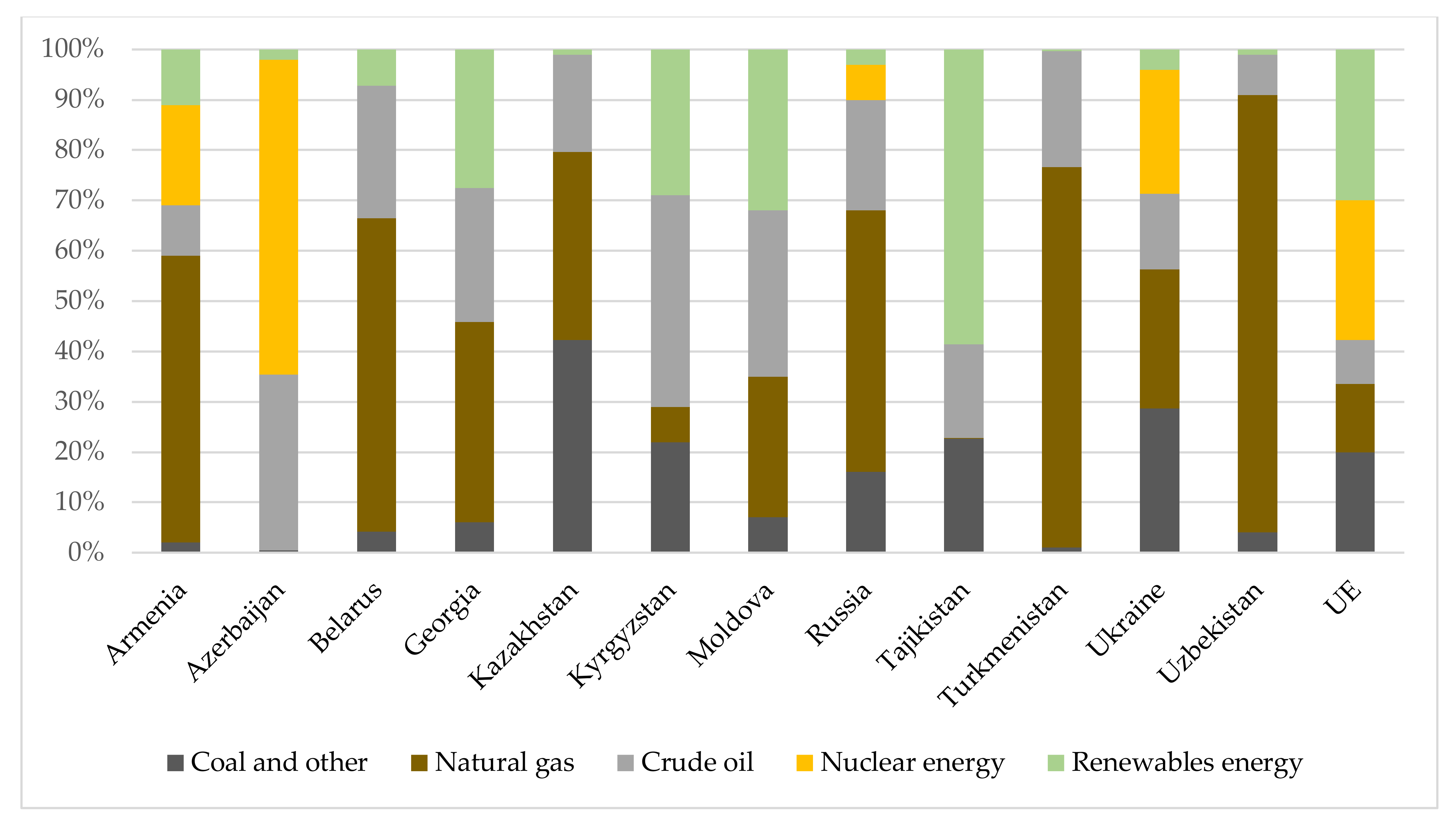
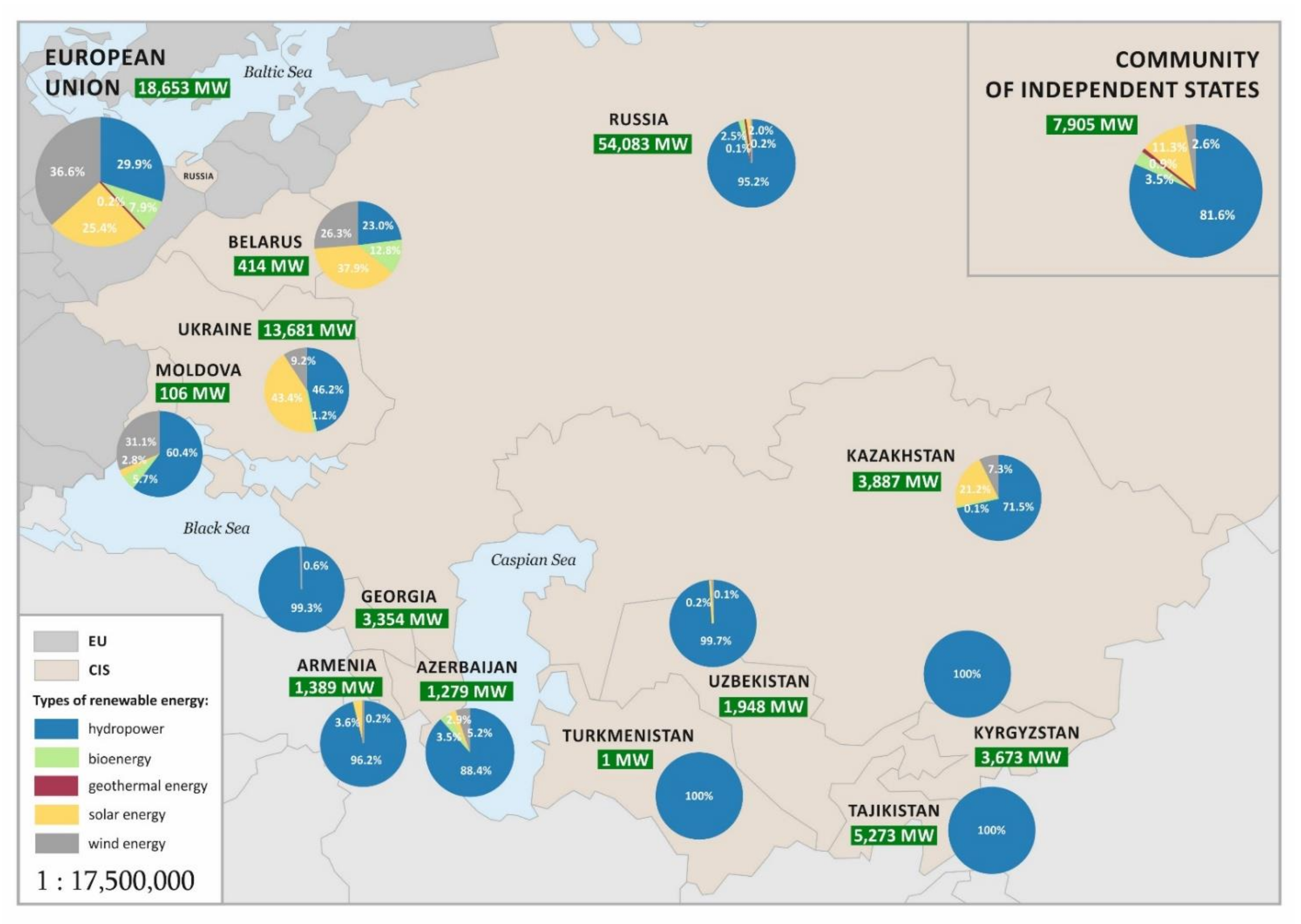
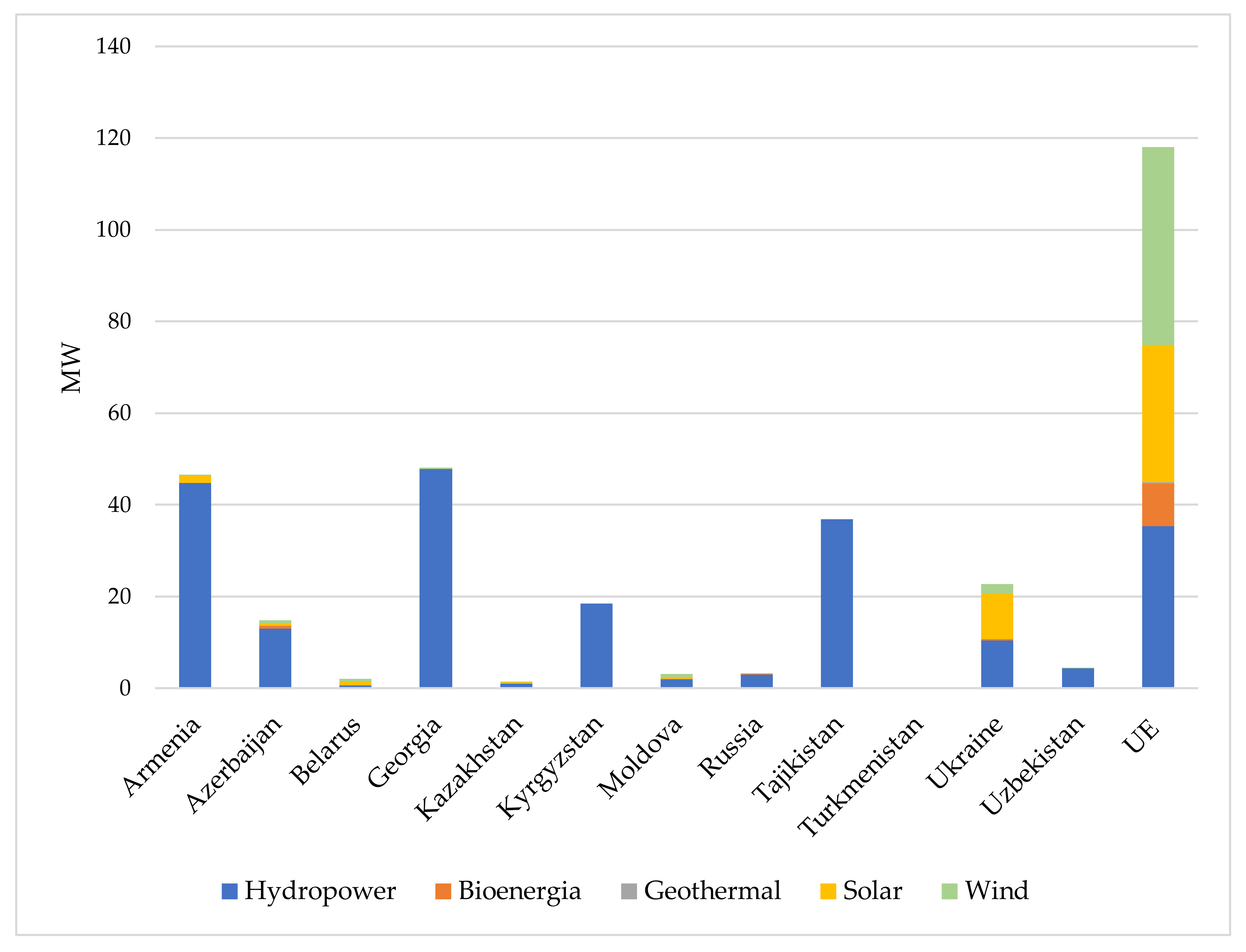
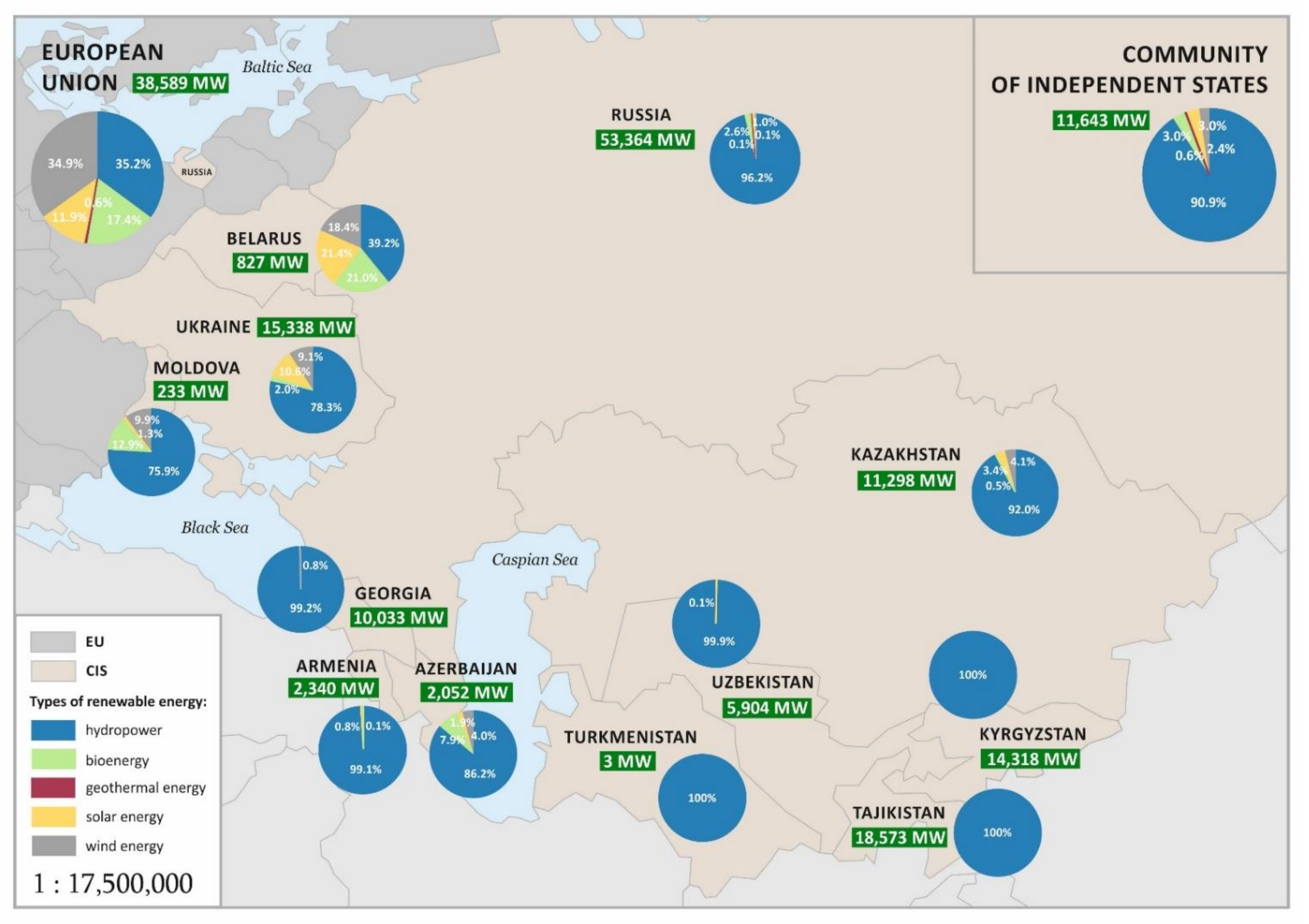

| Country | Total Area (in Thousand km2) | Population (in Million) |
|---|---|---|
| Armenia | 29.8 | 2.991 |
| Azerbaijan | 86.6 | 9.822 |
| Belarus | 207.6 | 9.413 |
| Georgia | 69.7 | 3.718 |
| Kazakhstan | 2724.9 | 18.736 |
| Kyrgyzstan | 198.5 | 6.263 |
| Moldova | 33.8 | 3.553 |
| Russia | 17,075.4 | 146.238 |
| Tajikistan | 143.1 | 7.800 |
| Turkmenistan | 488.1 | 5.180 |
| Ukraine | 603.7 | 37.289 |
| Uzbekistan | 447.4 | 33.398 |
| CIS total | 22,108.6 | 284.401 |
| EU total | 4478.1 | 514.502 |
| Country | Hydropower | Bioenergy | Geothermal | Solar | Wind | Total Energy | ||||||
|---|---|---|---|---|---|---|---|---|---|---|---|---|
| Average Absolute Gain (MW) | Average Growth Rate | Average Absolute Gain (MW) | Average Growth Rate | Average Absolute Gain (MW) | Average Growth Rate | Average Absolute Gain (MW) | Average Growth Rate (%) | Average Absolute Gain (MW) | Average Growth Rate (%) | Average Absolute Gain (MW) | Average Growth Rate (%) | |
| Armenia | 12.3 | 1.3% | 12.5 | 0.0 | 0.0% | 24.8 | 2.5% | |||||
| Azerbaijan | 7.0 | 0.8% | 1.8 | 5.8% | 8.0 | 94.9% | 14.5 | 102.1% | 31.3 | 3.5% | ||
| Belarus | 15.5 | 41.7% | 4.5 | 14.6% | 36.0 | 129.4% | 16.5 | 36.1% | 72.4 | 49.1% | ||
| Georgia | 113.8 | 5.0% | 0.3 | 5.3 | 119.3 | 5.2% | ||||||
| Kazakhstan | 25.0 | 1.2% | 0.5 | 169.8 | 78.8% | 53.0 | 58.0% | 248.3 | 10.3% | |||
| Kyrgyzstan | −1.0 | 0.0% | −1.0 | 0.0% | ||||||||
| Moldova | 0.0 | 0.0% | 0.8 | 26.0% | 0.5 | 44.2% | 8.0 | 220.8% | 9.3 | 15.4% | ||
| Russia | 118.7 | 0.3% | 0.0 | 0.0% | −1.0 | −1.7% | 250.7 | 158.9% | 22.8 | 110.7% | 391.1 | 1.0% |
| Tajikistan | 60.0 | 1.6% | 60.0 | 1.6% | ||||||||
| Turkmenistan | 0.0 | 0.0% | 0.0 | 0.0% | ||||||||
| Ukraine | 108.8 | 2.4% | 29.0 | 47.2% | 1273.8 | 91.8% | 186.0 | 34.8% | 1597.5 | 23.3% | ||
| Uzbekistan | 45.5 | 3.3% | 0.8 | 58.7% | 0.3 | 46.5 | 3.4% | |||||
| CIS | −60.7 | −1.2% | 6.1 | 3.1% | −1.0 | −1.7% | 179.9 | 71.6% | 28.8 | 30.8% | 153.2 | 2.7% |
| EU | 28.2 | 0.7% | 63.6 | 6.5% | 0.6 | 2.4% | 311.0 | 10.7% | 444.3 | 10.6% | 847.6 | 6.9% |
| Country | Hydropower | Bioenergy | Geothermal | Solar | Wind | Total Energy | ||||||
|---|---|---|---|---|---|---|---|---|---|---|---|---|
| Average Absolute Gain (MW) | Average Growth Rate | Average Absolute Gain (MW) | Average Growth Rate | Average Absolute Gain (MW) | Average Growth Rate | Average Absolute Gain (MW) | Average Growth Rate (%) | Average Absolute Gain (MW) | Average Growth Rate (%) | Average Absolute Gain (MW) | Average Growth Rate (%) | |
| Armenia | 28.1 | 1.7% | 4.9 | −0.3 | −14.3% | 32.7 | 1.9% | |||||
| Azerbaijan | 32.6 | 2.6% | −4.9 | −3.7% | 8.7 | 104.9% | 19.5 | 161.9% | 55.9 | 3.9% | ||
| Belarus | 54.2 | 44.6% | 8.5 | 7.5% | 42.4 | 187.3% | 31.5 | 79.4% | 136.6 | 43.3% | ||
| Georgia | 373.9 | 5.6% | 0.0 | 21.1 | 395.0 | 5.9% | ||||||
| Kazakhstan | 281.5 | 3.9% | 3.8 | 66.5 | 48.1% | 82.2 | 51.8% | 434.1 | 5.7% | |||
| Kyrgyzstan | 806.4 | 8.9% | 806.4 | 8.9% | ||||||||
| Moldova | −33.8 | −17.2% | 3.8 | 26.0% | 0.4 | 25.5% | 5.4 | 145.9% | −24.3 | −11.0% | ||
| Russia | 83.6 | 0.2% | 0.0 | 0.0% | −1.0 | −1.7% | 118.5 | 105.9% | 10.3 | 68.2% | 211.4 | 0.5% |
| Tajikistan | 418.3 | 3.2% | 418.3 | 3.2% | ||||||||
| Turkmenistan | 0.0 | 0.0% | 0.0 | 0.0% | ||||||||
| Ukraine | 1259.1 | 19.9% | 25.4 | 14.7% | 81.3 | 7.7% | 23.1 | 2.3% | 1388.9 | 16.2% | ||
| Uzbekistan | −550.7 | −10.0% | 1.2 | 46.4% | 0.0 | −549.5 | −10.0% | |||||
| CIS | 193.7 | 2.6% | 6.1 | 2.4% | −1.0 | −1.7% | 24.9 | 11.8% | 17.5 | 9.9% | 241.2 | 2.9% |
| EU | 58.3 | 0.6% | 86.9 | 1.8% | 0.6 | 0.3% | 173.7 | 5.6% | 660.2 | 7.5% | 979.8 | 3.6% |
| Year/Energy Type | 2015 | 2016 | 2017 | 2018 |
|---|---|---|---|---|
| All energy | 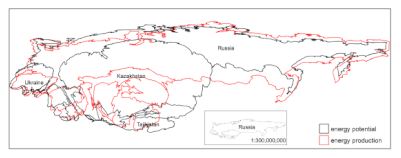 | 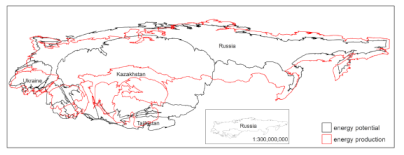 | 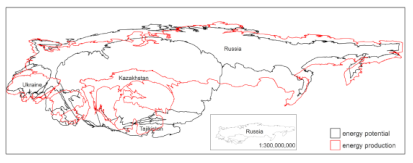 | 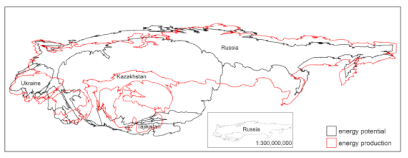 |
| Biomass | 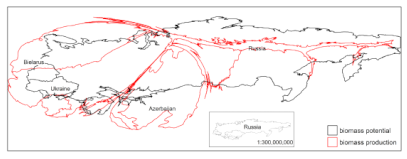 | 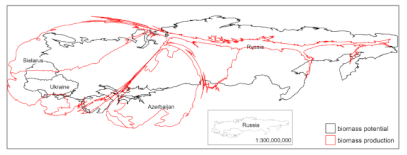 | 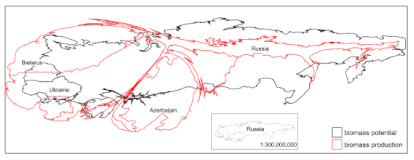 | 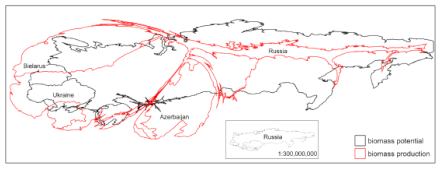 |
| Geothermal | 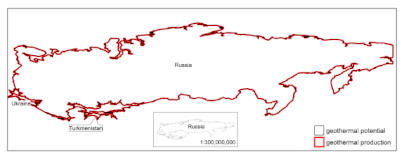 | 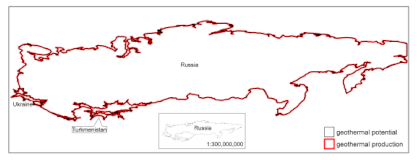 | 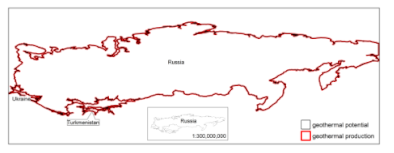 | 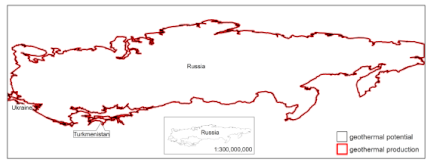 |
| Hydro | 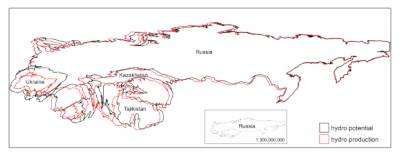 |  | 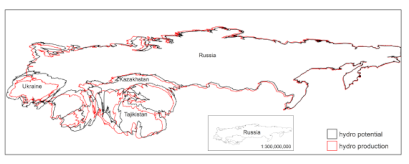 | 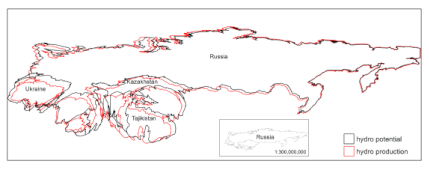 |
| Solar | 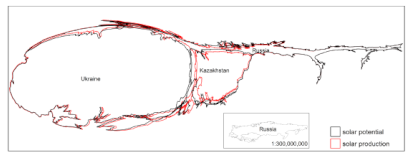 |  | 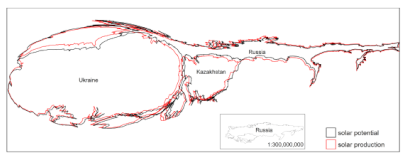 |  |
| Wind |  |  | 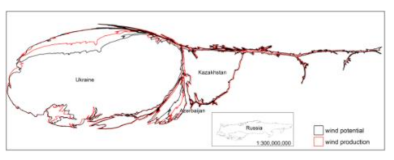 | 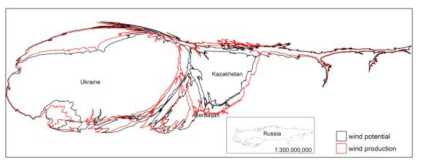 |
Publisher’s Note: MDPI stays neutral with regard to jurisdictional claims in published maps and institutional affiliations. |
© 2021 by the authors. Licensee MDPI, Basel, Switzerland. This article is an open access article distributed under the terms and conditions of the Creative Commons Attribution (CC BY) license (http://creativecommons.org/licenses/by/4.0/).
Share and Cite
Chowaniak, M.; Gródek-Szostak, Z.; Kotulewicz-Wisińska, K.; Luc, M.; Suder, M.; Szeląg-Sikora, A. The RES in the Countries of the Commonwealth of Independent States: Potential and Production from 2015 to 2019. Energies 2021, 14, 1856. https://doi.org/10.3390/en14071856
Chowaniak M, Gródek-Szostak Z, Kotulewicz-Wisińska K, Luc M, Suder M, Szeląg-Sikora A. The RES in the Countries of the Commonwealth of Independent States: Potential and Production from 2015 to 2019. Energies. 2021; 14(7):1856. https://doi.org/10.3390/en14071856
Chicago/Turabian StyleChowaniak, Maciej, Zofia Gródek-Szostak, Karolina Kotulewicz-Wisińska, Małgorzata Luc, Marcin Suder, and Anna Szeląg-Sikora. 2021. "The RES in the Countries of the Commonwealth of Independent States: Potential and Production from 2015 to 2019" Energies 14, no. 7: 1856. https://doi.org/10.3390/en14071856
APA StyleChowaniak, M., Gródek-Szostak, Z., Kotulewicz-Wisińska, K., Luc, M., Suder, M., & Szeląg-Sikora, A. (2021). The RES in the Countries of the Commonwealth of Independent States: Potential and Production from 2015 to 2019. Energies, 14(7), 1856. https://doi.org/10.3390/en14071856








